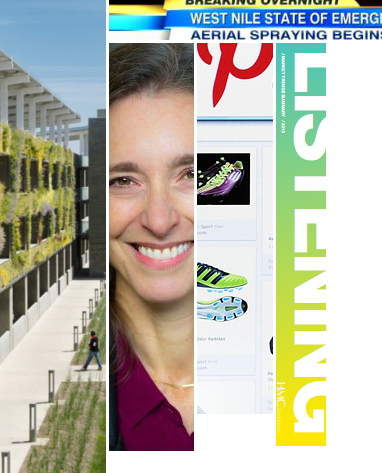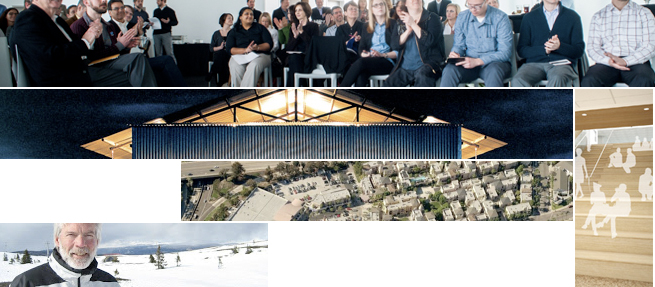HDR on meddling with nature. LPA's low-impact design and pollution. HMC uncovers future market trends. The story of trash in NYC. A Pinterest debut.

Meddling with nature. Mark Meaders, sustainable design project manager at HDR Architecture, examines the consequences of aerial spraying of mosquitoes for West Nile virus in Dallas last August.
One consequence was how the spraying affected the bee population in Dallas. Bees contribute $14 billion to the value of U.S. crop production through their pollination efforts. Three months after the spraying, beekeepers spoke with Dallas County officials and said their hives were in poor shape because of the spraying.
Pollution control. Tyler Whaley, a civil engineer at LPA, discusses theprocess of engineering stormwater systems and how low impact design can mitigate the pollution caused by modern society.
The fundamental concept for LID is to replicate the natural conditions of the land prior to interference by humans. Vegetated swales, biofiltration planters, constructed wetlands, and rain gardens are just some examples of LID structures to replace the catch-all mechanical filtration systems.
Via LPA Blog
Future marketing trends. HMC Architects has released a marketing report on how universal trends are changing the way all organizations think and conduct business, as the design and construction industry is in a state of change. The firm conducted a Market Survey during the third quarter of 2012 to better understand the critical drivers that influence HMC clients’ service delivery so that the firm can design or re-design the spaces where they conduct business more effectively.
“One hundred percent of survey participants indicated that a major focus is to do more with less. We are no longer in just a down economy; it has become the new normal and organizations have realized they must adapt in order to survive. They are responding by finding ways to cut costs, reduce redundancy, increase worker productivity, and achieve operational efficiency.”
Keeping NYC Clean. Robin Nagle an anthropologist at New York City's Department of Sanitation, has written Picking Up: On the Streets and Behind the Trucks with the Sanitation Workers of New York City, a book that chronicles the men and women of New York City's Department of Sanitation and make clear why this small army of uniformed workers is the most important labor force on the streets.
"This is a story that unfolds along the curbs, edges, and purposely forgotten quarters of a great metropolis. Some of the narrative is common to cities around the world, but this tale is particular to New York. It centers on the people who confront the problem that contemporary bureaucratic language calls municipal solid waste. It's a story I've been discovering over the past several years, and from many perspectives." --Robin Nagle
Innovative Social Media Campaign
Catalog 2.0. J. Crew debuted its fall catalog on its Pinterest page, giving its nearly 65,000 Pinterest followers and anyone else who stumbled on the platform the chance to pre-order the clothes before they showed up in the printed catalogs.
The move does more than create social buzz. It gives the company its own sneak peek at which items will sell well. And the flurry of comments and pins provide feedback and allow J.Crew to measure Web attention to a degree that it can’t on its own site or a catalog.
Via Business Week



